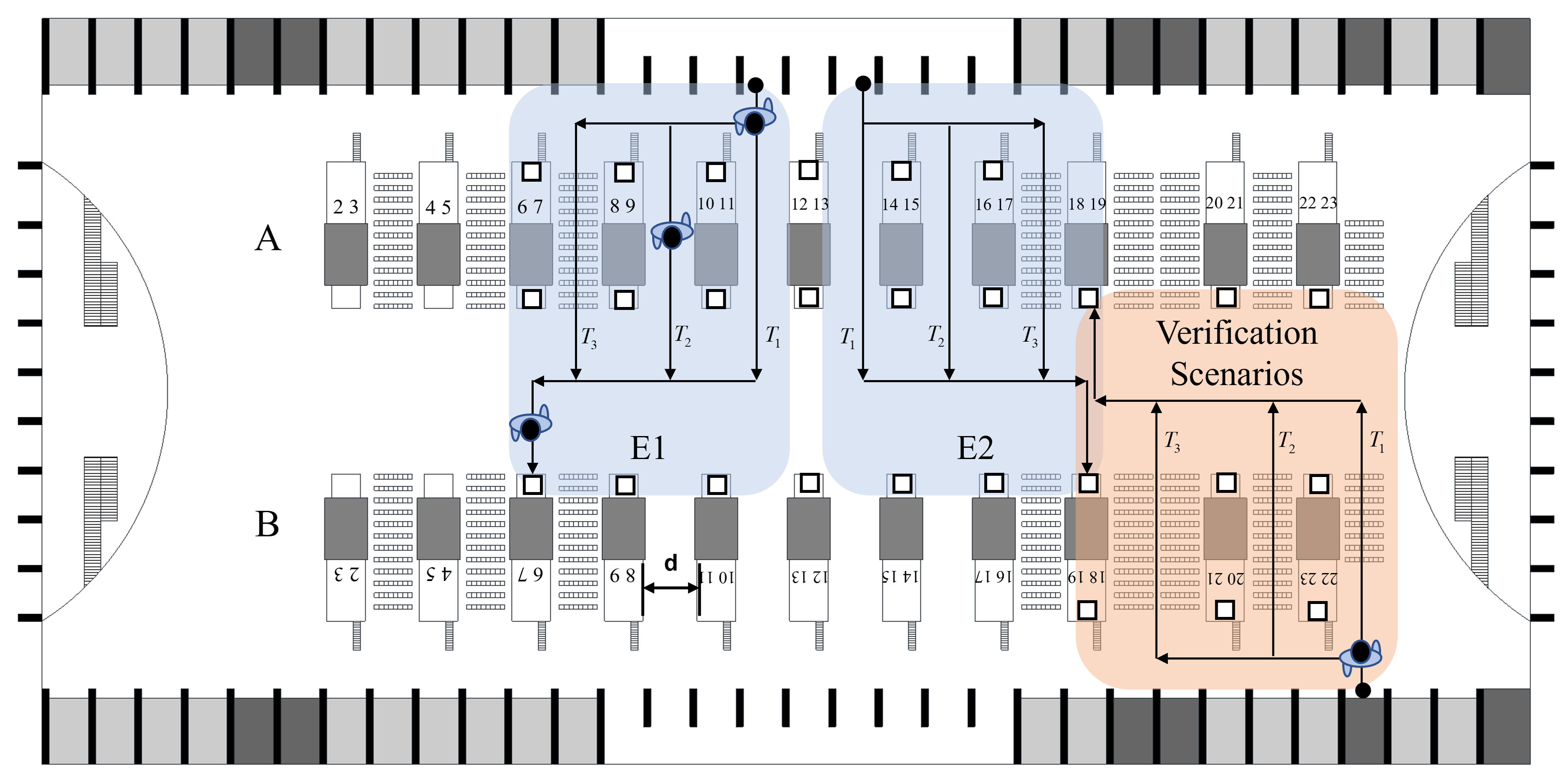A Research on Pedestrian Wayfinding Behavior in Large Public Space Utilizing Non-immersive VR Platform
DOI:
https://doi.org/10.17815/CD.2024.167Keywords:
Virtual Reality, Wayfinding Behavior, Utility ModelAbstract
In this study, we conducted experiments to investigate pedestrian wayfinding behavior using a non-immersive virtual reality platform. We developed a route choice model that combines environmental factors and individual pedestrian attributes, employ-ing a hybrid Logit model. The dataset for pedestrian route choices is collected from partic-ipants’ walking trajectories within the Tianjin West Railway Station scenario. The results of our experiments demonstrate that the model effectively represents pedestrians’ route choices within the environment and exhibits strong predictive capabilities for wayfinding.
References
Wang, Y., Kyriakidis, M., Dang, V.N.: Incorporating human factors in emergency evacuation-an overview of behavioral factors and models. International Journal of Disaster Risk Reduction 60, 102254 (2021)
Dulebenets, M.A., Abioye, O.F., Ozguven, E.E., Moses, R., Boot, W.R., Sando, T.: Development of statistical models for improving efficiency of emergency evacuation in areas with vulnerable population. Reliability engineering & system safety 182, 233-249 (2019)
Kinateder, M., Comunale, B., Warren, W.H.: Exit choice in an emergency evacuation scenario is influenced by exit familiarity and neighbor behavior. Safety science 106, 170-175 (2018)
Haghani, M., Sarvi, M.: Following the crowd or avoiding it? empirical investigation of imitative behaviour in emergency escape of human crowds. Animal behaviour 124, 47-56 (2017)
Basu, R., Sevtsuk, A.: How do street attributes affect willingness-to-walk? city-wide pedestrian route choice analysis using big data from boston and san francisco. Transportation research part A: policy and practice 163, 1-19 (2022)
Gabbana, A., Corbetta, A., Toschi, F.: Modeling routing choices in unidirectional pedestrian flows. Collective Dynamics 6, 1-9 (2021)
Srinivasan, A.R., Karan, F.S.N., Chakraborty, S.: Pedestrian dynamics with explicit sharing of exit choice during egress through a long corridor. Physica A: Statistical Mechanics and its Applications 468, 770-782 (2017)
He, M., Wang, Q., Chen, J., Xu, S., Ma, J.: Modeling pedestrian walking behavior in the flow field with moving walkways. Physica A: Statistical Mechanics and its Applications 619, 128726 (2023)
Haghani, M., Sarvi, M.: Human exit choice in crowded built environments: Investigating underlying behavioural differences between normal egress and emergency evacuations. Fire Safety Journal 85, 1-9 (2016)
Li, H., Zhang, J., Xia, L., Song, W., Bode, N.W.: Comparing the route-choice behavior of pedestrians around obstacles in a virtual experiment and a field study. Transportation research part C: emerging technologies 107, 120-136 (2019)
Cosma, G., Ronchi, E., Nilsson, D.: Way-finding lighting systems for rail tunnel evacuation: A virtual reality experiment with oculus rifttextregistered. Journal of Transportation Safety & Security 8(sup1), 101-117 (2016)
Tong, Y., Bode, N.W.: How building layout properties influence pedestrian route choice and route recall. Transportmetrica A: Transport Science pp. 1-23 (2022)
Feng, Y., Duives, D.C., Hoogendoorn, S.P.: Using virtual reality to study pedestrian exit choice behaviour during evacuations. Safety science 137, 105158 (2021)
Yu, L., Wang, Z., Chen, F., Li, Y., Wang, W.: Subway passengers’ wayfinding behaviors when exposed to signage: An experimental study in virtual reality with eye-tracker. Safety science 162, 106096 (2023)

Downloads
Published
How to Cite
Issue
Section
Categories
License
Copyright (c) 2024 Zhicheng Dai, Dewei Li

This work is licensed under a Creative Commons Attribution 4.0 International License.
Authors contributing to Collective Dynamics agree to publish their articles under the Creative Commons Attribution 4.0 license.
This license allows:
Share — copy and redistribute the material in any medium or format
Adapt — remix, transform, and build upon the material
for any purpose, even commercially.
The licensor cannot revoke these freedoms as long as you follow the license terms.
Authors retain copyright of their work. They are permitted and encouraged to post items submitted to Collective Dynamics on personal or institutional websites and repositories, prior to and after publication (while providing the bibliographic details of that publication).








